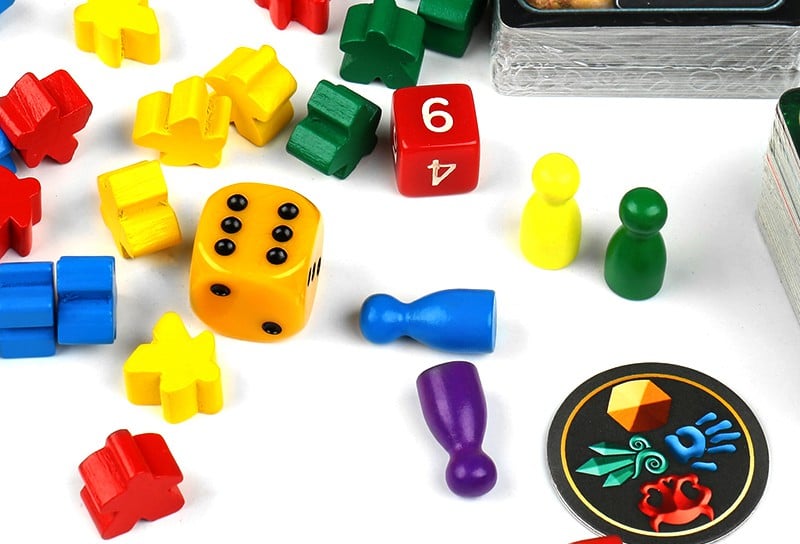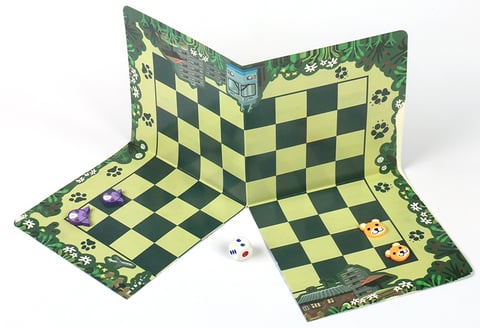Board games have been a source of entertainment and fun for centuries, and they have never been more popular than they are today. With the rise of online gaming and social media, people are rediscovering the joys of sitting down with friends and family to play a good, old-fashioned board game. If you're interested in producing your own board game, this guide will help you get started.
Step 1: Choose Your Theme
The first step in producing a board game is to choose a theme. Your theme will determine the style, tone, and overall direction of your game. Do you want to create a fast-paced, action-packed game, or a more strategic, slow-burn game? Do you want to focus on a particular time period or subject matter, like medieval times or space exploration? Once you have a theme in mind, you can start to flesh out your game and determine what mechanics and elements will be included.
Step 2: Create Your Game Mechanics
The next step is to create your game mechanics. This involves deciding how the game will be played, what actions players can take, and how players will move around the board. You'll also need to determine what resources or tools players will have at their disposal, and how these resources can be used to achieve their goals.
Step 3: Design Your Board and Pieces
Once you have your game mechanics in place, you can start to design your board and pieces. The board will be the central hub of your game, and it should reflect your theme and mechanics. For example, if your theme is medieval times, your board might feature castles, knights, and other elements of the time period.
Step 4: Write the Rules
Once your board and pieces are designed, you'll need to write the rules of your game. This will be a comprehensive guide that explains how to play the game, what each piece does, and what each action does. Make sure your rules are clear and easy to follow, so that players can jump right into the game without getting bogged down by complicated instructions.
Step 5: Test Your Game
Before you start producing your game on a large scale, you'll want to test it to make sure it's fun and engaging. Gather a group of friends and family, and play the game several times to get a sense of how it works and to identify any potential problems. This is also a good time to make any necessary adjustments to the game mechanics or rules.
Step 6: Produce Your Game
Once you've tested your game and made any necessary adjustments, you're ready to start producing it. You'll need to find a manufacturer to produce your board, pieces, and packaging, and you'll also need to decide on a distribution plan. You may want to sell your game through retail stores, or you may want to sell it directly to consumers through your own website.
Producing a board game is a fun and rewarding process, and it's a great way to bring people together for a fun and memorable experience. By following these steps, you can create a game that will be enjoyed by generations to come.
Step 7: Find a Manufacturer
When it comes to producing your board game, finding a reputable manufacturer is key. In China, there are many factories that specialize in board game production, so it's important to do your research and find one that has a good track record of producing high-quality products. Consider factors like cost, delivery time, and the level of customer service offered by each factory before making a decision.
Step 8: Communicate Your Requirements
Once you've found a manufacturer, it's important to communicate your requirements clearly and effectively. Provide detailed specifications for your board, pieces, and packaging, and ensure that the manufacturer understands exactly what you need. It's a good idea to provide samples or prototypes of your game components to help the manufacturer better understand your vision.
Step 9: Review and Approve Samples
Before the final production run, it's crucial to review and approve samples of your game components. This will give you a good idea of what the final product will look like, and you can make any necessary changes before the final run begins. Make sure the samples meet your specifications and that the manufacturer has done everything to your satisfaction.
Step 10: Quality Control
Once the samples have been approved, it's important to keep an eye on the quality control process during the final production run. Make sure the manufacturer is using the right materials and adhering to the correct production standards. It's also a good idea to request random product inspections to ensure that the final product meets your requirements.
Step 11: Shipping and Delivery
Finally, make sure that the finished products are shipped and delivered on time and in good condition. Work with your manufacturer to arrange for the most cost-effective and efficient shipping method, and make sure that the delivery date is clearly stated in the contract.
By following these steps, you'll be well on your way to producing a high-quality board game that will provide hours of fun and entertainment for players. Just remember to take your time and be patient, as the production process can take several months from start to finish. With the right planning and preparation, you'll be able to create a board game that you and your players will love!



